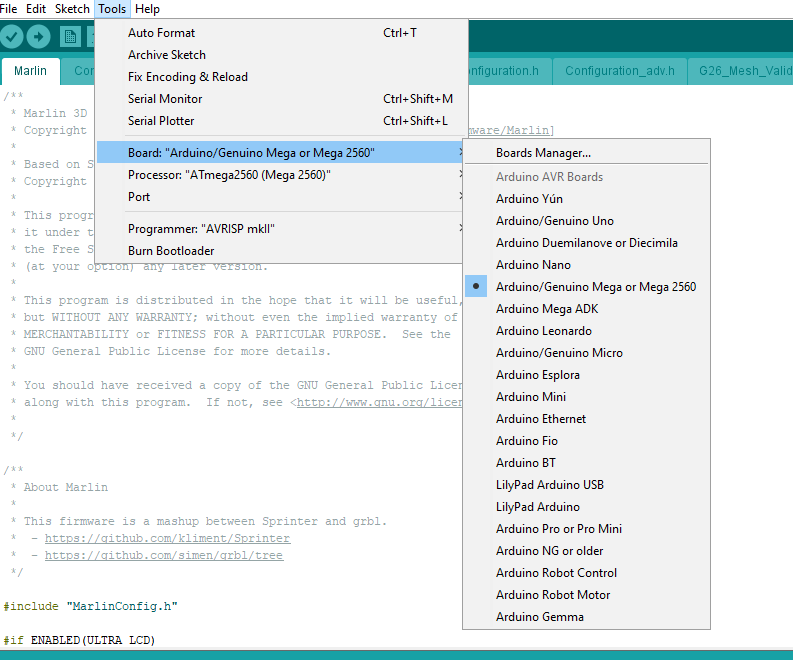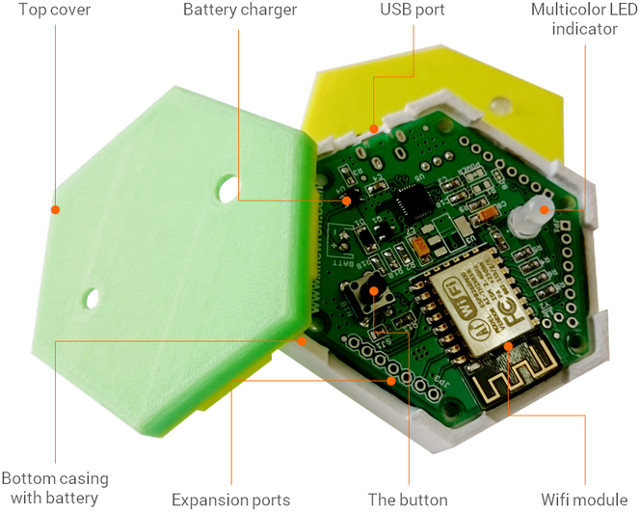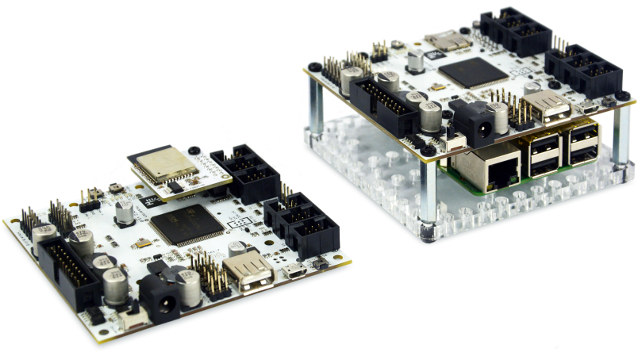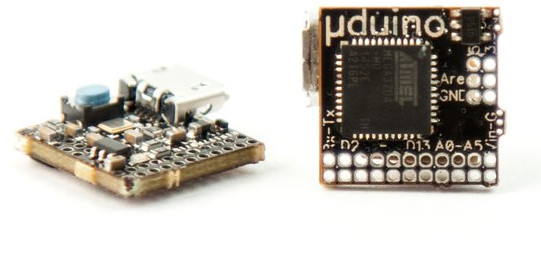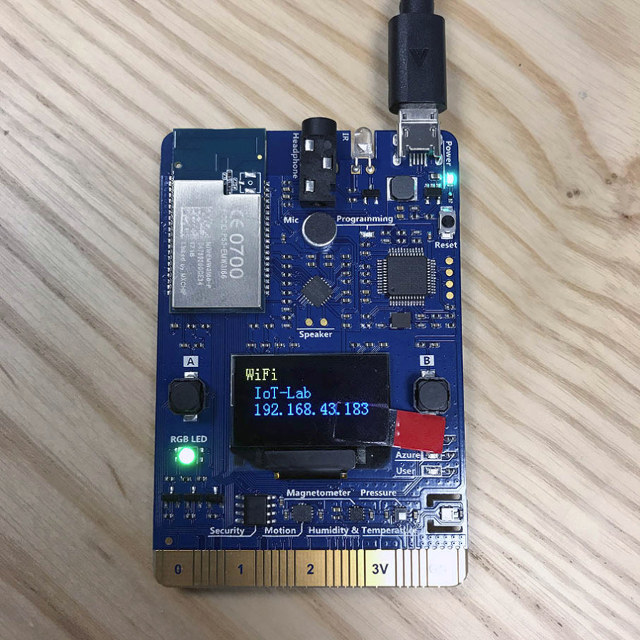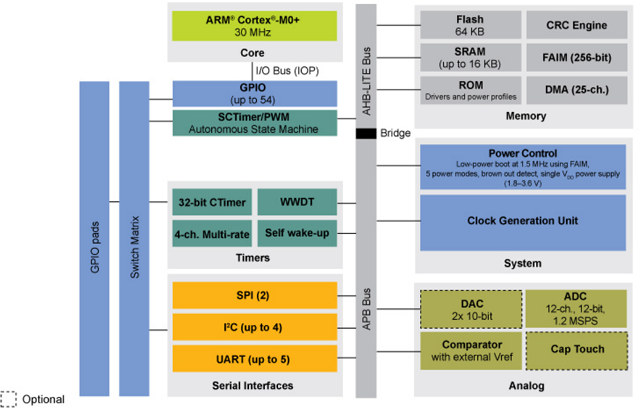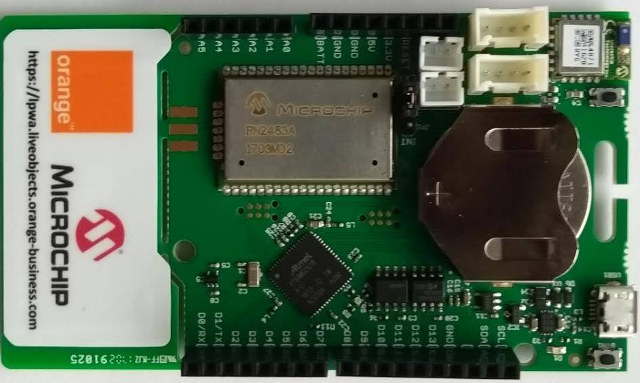What a title. Just a quick update on the Tevo I am reviewing. I didn’t want to upgrade the firmware, but I read so many posts on Facebook about it I took the plunge. I didn’t like was the firmware that came with it. It only did a 3 point level, and seemed to go outside the build plate dimensions. The first 2 printers I have reviewed were Marlin, so it was what I am most familiar with. I used Jim Brown’s Marlin fork as a base. It was missing dual extruder and auto level sensor in the pre-configured profiles. It took a while, but I was able to add the extra features. The auto bed level sensor connects to where the normal Z end stop sensor is connected. I would like to warn you to warm your bed for 5 minutes for the best reproducible results. I tested several […]
1btn is a Battery Powered Open Source ESP8266 WiFi Button
If you have some WiFi power switch like Sonoff TH16 at home, you’d normally control them using a mobile app or a web interface. This is all good, but getting your phone, unlocking it, and launching the app to turn on or off an appliance is not the most efficient way to operate, and in some cases, some people in the household may not know how to use a smartphone. Physical WiFi buttons are the solution, but there aren’t so many for sale. We’ve seen previously it was possible to hack an Amazon Dash, but it’s not really that flexible, and 1btn could potentially be a better option, as it’s open source and based on Espressif ESP8266 WiSoC. 1btn specifications: WiFi Module – ESP-12F based on Espressif ESP8266 MCU – Microchip Atmel ATmegaxx8 AVR MCU Connectivity – 802.11 b/g/b WiFi up to ~50 meter range USB – 1x USB port […]
Husarion CORE2 STM32 Board for Robotics Projects Works with ESP32, Raspberry Pi 3, or ASUS Tinkerboard
Husarion CORE2 is a board designed to make robotics projects simpler and faster to complete with pre-configured software and online management. Projects can start using LEGOs, before moving to 3D printed or laser-cut version of the mechanical parts without having to spend too much time on the electronics and software part of the project. Two versions of the board are available: CORE2 combining STM32 MCU with ESP32 WiFI & Bluetooth module, and CORE2-ROS with STM32 instead coupled to a Raspberry Pi 3 or ASUS Tinkerboard running ROS (Robot Operating System). Both solutions share most of the same specifications: MCU -STMicro STM32F4 ARM CORTEX-M4 MCU @ 168 MHz with 192 kB RAM, 1 MB Flash External Storage – 1x micro SD slot USB – 1x USB 2.0 host port with 1A charging capability; 1x micro USB port for debugging and programming via FTDI chip Expansion Headers hRPi expansion header for CORE2-ROS […]
μduino May Be the World’s Smallest Arduino Board (Crowdfunding)
OLIMEXINO-85S may have held the title of the world’s smallest Arduino (compatible) board for the last few years, being barely bigger than a micro SD card as it measures about 16.9 x 12.7 mm, but there’s a new mini champion in town with μduino board measuring just 12 x 12 mm. μduino board specifications: MCU – Microchip Atmel ATMEGA32U4 8-bit AVR microcontroller @ 16 MHz with 2,560 bytes of RAM, 32KB flash, and 1024 bytes of EEPROM (Arduino Leonardo compatible) I/Os 6x Analog I/O ports 14x Digital I/O ports (including Rx/Tx) including 7x PWM 1x Analog reference voltage port 1.27mm pitch Programming / Debugging – 1x micro USB port; 6-pin ICSP programming ports (load custom bootloaders, program other boards, etc) Misc – Status LED, reset button Power Supply – 5V via micro USB port; 5V voltage regulator (accepts up to 16V DC); 2x 5V ports; 2x ground ports Dimensions – 12x […]
MXCHIP AZ3166 IoT Developer Kit is Designed to Work with Microsoft Azure
MXCHIP is a Shanghai based company designing and manufacturing WiFi IoT modules such as EMW3165, which has now made a development board based on their EMW3166 STM32+ Cypress module – called MXChip AZ3166 – specifically designed for Microsoft Azure cloud computing platform. MXChip AZ3166 board specifications: Wireless Module – EMW3166 WiFi module with STM32F412 ARM Cortex M4F MCU @ 100 MHz with 256KB SRAM,1MB+2MB SPI Flash, Cypress BCM43362 WiFi chip Display – 128×64 OLED display Audio – Audio codec, built-in microphone, and 3.5mm heaphone jack Sensors – Motion sensor, magnetometer, atmospheric pressure sensor, temperature and humidity sensor Expansion – Finger extension interface with 25 external I/O pins including GPIOs, I2C, I2S, UART, ADC, Reset, 3.3V, and GND Debugging – DAP Link emulator USB – 1x Micro USB port for power, programming, debugging Misc – 2x user buttons; 1x RGB light; 3x working status indicator; IR emitter; Security encryption chip Power Supply […]
NXP Unveils LPC84x ARM Cortex M0+ MCU Family, and LPCXpresso845-MAX Evaluation Board
NXP Semiconductors has expanded LPC800 series MCUs with the new LPC84x family of 32-bit ARM Cortex-M0+ microcontroller said to offer 10 times the performance, three times more power saving savings, and 50 percent smaller code-size than 8- or 16-bit microcontrollers. Key features of LPC84x MCU family (LPC844 / LPC845): MCU Core – ARM Cortex-M0+ core @ 30 MHz with advanced power optimization RAM – 16 kB RAM (Logic for Bit banding across all of SRAM) Storage – 64 kB Flash, small 64-byte page size suitable for EEPROM emulation Peripherals Timers – 32-bit CTimer, WWDT, 4-channel multi-rate, SCTimer/PWM Serial Interfaces – Up to 4x I2C, 2x SPI, up to 5x UART Analog Interfaces – 12 ch, 12-bit ADC up to 1.2 Msps; 2x 10-bit DAC; comparator with external Vreg; 9-channel capacitive touch interface working in sleep and deep sleep modes Up to 54 GPIOs 25-ch DMA offloads core Power Control Five […]
GR-LYCHEE Development Board to Combine Renesas RZ/A1LU Processor, ESP32 Module, and a VGA Camera
Japanese semiconductor vendors have mostly stayed away from the maker market, at least outside Japan, as most people would be hard-pressed to come up with a hobbyist development board powered by processor or micro-controller from Toshiba, Sony, Renesas or other Japanese companies, despite the three aforementioned names being in the top 20 semiconductors companies. I can only remember having written about Fujitsu F-Cue 96Boards, as well as Renesas GR-PEACH mbed board since I started this blog 7 years ago. Renesas seems to be the only company to have a real community behind with their “Gadget Renesas” pink-colored development boards, and the latest and seventh board is GR-LYCHEE powered by Renesas RZ/A1LU ARM Cortex-A9 processor, and equipped with a WiFi & Bluetooth module, and a camera. Renesas GR-LYCHEE board preliminary specifications: Micro-processor – Renesas RZ / A1LU (R7S721030VCFP 176-pin QFP) ARM Cortex-A9 Processor @ 384 MHz with 3MB on-chip SRAM Storage […]
Microchip based Orange LoRa Explorer Kit Connects to Orange’s own LoRaWAN Network
You’d think Telecom operators with all infrastructure in place would focus their IoT efforts on LTE Cat M1 or LTE Cat NB-IoT, but Orange has setup its own LoRa network in France with the aim of achieving national coverage by December 2017, at which time they’ll also test interconnection and roaming with other European operators. The company has also launched the LoRa Explorer Kit based on Microchip solutions, and designed by SODAQ. Orange LoRa Explorer Kit specifications: MCU – Microchip Atmel SAMD21 ARM Cortex M0+ MCU @ 48 MHz with 256KB flash, 32KB RAM, up to 16KB EEPROM by emulation Storage – 4Mbit serial flash (Microchip SST25PF040C) Connectivity Microchip RN2483A LoRa module + PCB antenna Microchip RN4871 Bluetooth 4.2 module (BLE) with ceramic antenna Security – Microchip ATECC508A1 crypto chip to securely store LoRa keys. USB – 1x micro USB port for charging and programming Expansion – “Arduino M0” compatible headers with 10-bit […]


